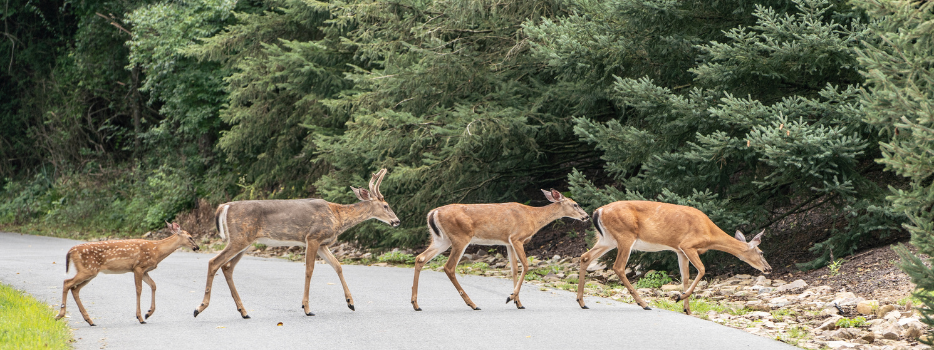Fall is one of the most enjoyable times of the year for Midwestern drivers. The weather is comfortable, football is back, and the changing leaves make for beautiful drives. Unfortunately, this season also brings an increased risk of deer collisions. Deer mating season runs from October through December, making deer more active and unpredictable during these months.
So how can you drive safely during peak deer season? Here are some essential safety tips to help prevent collisions between your car and a deer this fall and what to do if one occurs.
Safety tips for driving during deer season
Pay attention to your surroundings
Watch for yellow deer crossing signs; they indicate areas where deer are common. Keep your eyes moving and scan both sides of the road, especially around dawn and dusk when deer are most active. Also, be aware of other drivers; if the car ahead brakes suddenly or swerves, slow down and proceed cautiously.
One deer probably means more
Deer often travel in herds. If you see one cross the road, there are likely others nearby. Slow down immediately and remain alert. Peak deer activity usually occurs between 6:00pm and 9:00pm.
Use your high beams when possible
Use high beams whenever there’s no oncoming traffic to increase visibility. They help illuminate the road edges, giving you more time to spot animals. If your headlights aren’t performing well, visit your mechanic to check for burned-out bulbs or needed adjustments.
Never swerve for a deer or another animal
Swerving can lead to more severe accidents; you could lose control, veer into oncoming traffic, or strike a tree or ditch. The safest response is to brake firmly and stay in your lane.
Consider using deer whistles
While studies are mixed on their effectiveness, deer whistles are inexpensive and easy to install. They may offer some additional protection, and at the very least, peace of mind.
Stay calm and safe if a collision occurs
If you hit a deer, stay inside your vehicle if it is safe to do so. While your first instinct may be to check the damage, remaining in your car helps protect you from traffic and startled animals. From your car, you can:
- Call 911 if there is an emergency, someone is injured, or the scene creates a hazard.
- Turn on your hazard lights to alert other drivers and increase your visibility.
- Contact your insurance company to report the incident and begin the claims process.
- Call roadside assistance if your vehicle is disabled or you need help safely leaving the scene.
Know your insurance coverage
Understanding your auto insurance policy is key to avoiding surprises after an accident. Comprehensive insurance covers damage caused by contact with animals, while collision insurance applies to crashes with other vehicles or objects (like a tree or mailbox). Both coverages are typically optional unless you have a loan or lease.
If a deer suddenly appears and you cannot stop safely, it is best to hit the deer rather than swerve, as difficult as that may be. Doing so can prevent more serious injuries or vehicle damage, and if you have comprehensive coverage, your insurer will typically cover the repairs.
For detailed guidance on coverage options and limits, contact your local independent insurance agent.
This article is intended for general educational and illustrative purposes only and should not be construed to communicate legal or professional advice. Further, this article is not an offer to sell insurance. Please consult with your licensed insurance agent for specific coverage details and your insurance eligibility. All policies are subject to the terms, conditions, limitations, definitions, and exclusions contained therein.






